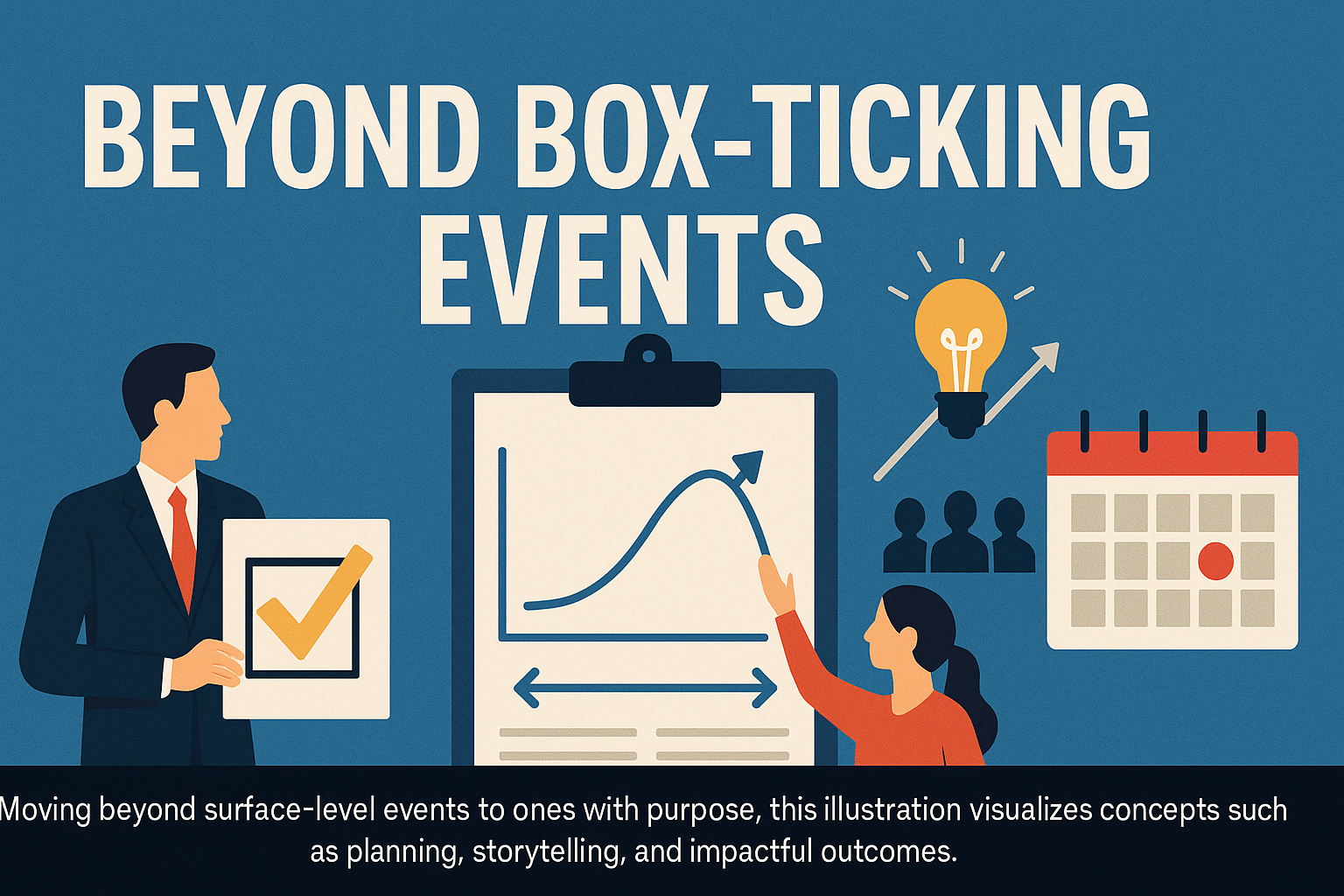Table of Contents
Beyond Box-Ticking Events
We’ve all attended an event that looked polished on the surface, the banners were up, the program ran on time, the photos looked great. Yet, when it ended, nothing truly stuck. No new ideas. No meaningful conversations. No spark to carry forward.
That gap is where many organizations miss the point. Events aren’t just about filling a room they’re about shaping what happens after everyone leaves. The real measure of success is not the applause at the end, but the decisions, partnerships, and actions that follow.
Why Purpose Matters
Bigger doesn’t always mean better. A thousand people in an auditorium can walk away unchanged, while thirty people in a workshop can leave with a shared vision that reshapes their industry. The difference? Clarity of purpose. Knowing why the event exists beyond logistics ensures every decision, from program design to participant selection, supports that vision.
Planning Backwards
One of the most effective strategies for meaningful events is to plan backwards. Instead of starting with, “What’s our theme this year?”, begin with:
What should people be able to do differently after this event?
Who really needs to be in the room for that to happen?
How do we make sure ideas live on after the lights go off?
With this perspective, events shift from staged performances to dynamic catalysts. Panels become conversations instead of speeches. Networking becomes intentional, not accidental. Even technology and staging evolve into tools that support impact.
A Quick Framework for Event Planners
Here are three guiding questions every planner should ask:
Why this event? – What change are you truly trying to create?
Why these people? – Who are the decision-makers, partners, or practitioners that matter most?
Why now? – What makes this gathering urgent and relevant today?
By answering these, events naturally focus on what matters, creating momentum that lasts beyond the closing session.
The Power of Storytelling in Events
Facts inform, but stories inspire. People connect with narratives more deeply than with slides or bullet points. That’s why storytelling is one of the most powerful tools in event planning.
Think of the event as a story arc:
The opening sets up the challenge.
The sessions explore the journey of tackling that challenge.
The closing invites participants to become co-authors of the next chapter.
Mini-Checklist for Storytelling in Events
Begin with a real challenge that matters to your audience.
Weave the theme consistently across sessions for a connected experience.
End by inviting participants to carry the story forward into their work and organizations.
This approach keeps energy alive long after the chairs are stacked.
Looking Ahead: Events as Catalysts for Change
The most memorable corporate events in the future will not be remembered for how grand the stage was, but for how deeply they mattered. They’ll be the gatherings people point back to as turning points, in their careers, their organizations, and even their industries.
At their best, events are not just dates on a calendar. They’re catalysts for change.
Read more here
Geovision Services’ Perspective
Events should inspire, connect, and transform, not just entertain. By combining strategy, storytelling, and innovation, we support organizations design gatherings that leave a lasting imprint. And this is just the beginning. We’ll be sharing more insights from such events with our clients, highlighting the lessons, ideas, and sparks of inspiration that emerge from each unique gathering. Because every event tells a story worth learning from.
Ready to create your next event for impact? Discover how Geovision Services can help realize. your vision.

